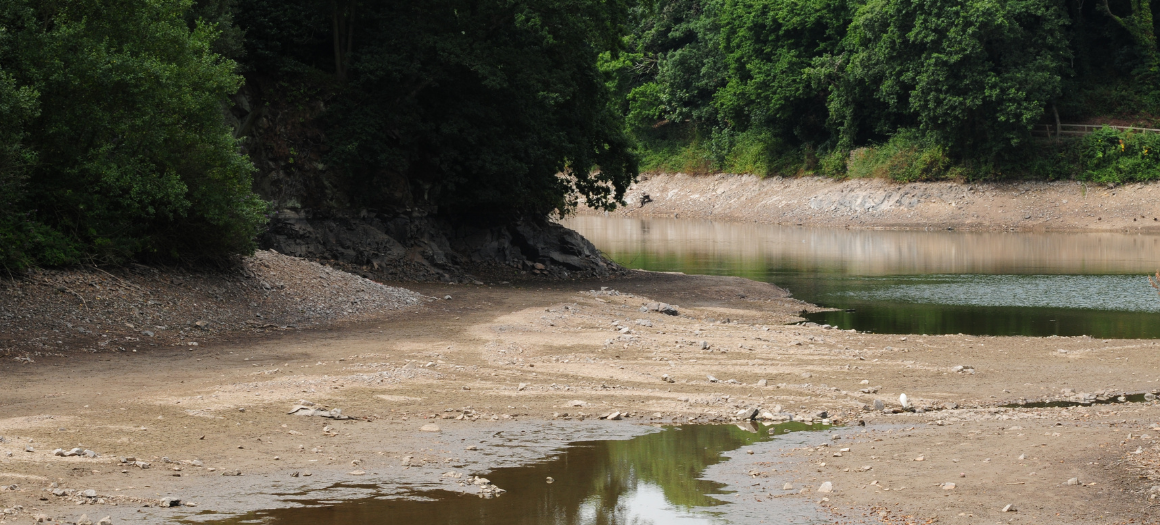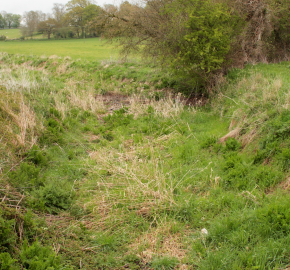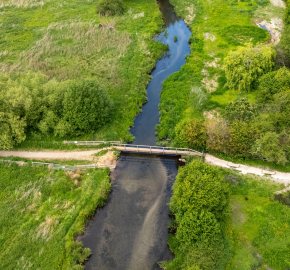WildFish publishes new report on the growing threat of water stress in the UK

WildFish has released The Abstraction Report, highlighting the growing pressures on UK rivers caused by water abstraction – the process of taking water from natural sources such as rivers and aquifers. The release of this report coincides with one of the driest springs since records began. According to the MET Office: “rainfall was well below average, with the UK receiving just 56% of its typical April total”.
The report explores the serious impacts of over-abstraction on wild fish populations and outlines solutions that could help protect and restore vital freshwater habitats.
Driven by demand for public water supply, agricultural use, and the worsening effects of climate change, many of our rivers no longer have enough water to support healthy ecosystems or dilute pollution effectively. The result is a significant decline in the diversity and abundance of wild fish and other water-dependent wildlife.
The Abstraction Report offers a comprehensive overview of the water abstraction process – from licensing to planning – and evaluates how it is currently regulated. Crucially, it also proposes measures to reduce the burden on our most vulnerable rivers, including iconic chalk streams such as the Test and Itchen.
Justin Neal, solicitor at WildFish, said: “At WildFish, we see the impacts of over-abstraction first hand. If we want to restore rivers and ensure they have adequate flow year-round, we need immediate action. That means ending the excessive exploitation of our rivers by water companies, who should already be applying for measures to reduce and restrict usage.”
Follow the link below to read The Abstraction Report today.
The Abstraction Report
The increasing threat from new development
Planning is a growing issue when it comes to water supply. Across the UK, new housing and infrastructure developments are being approved without adequate provision for water or the capacity to manage sewage effectively.
In our latest report, “No Capacity, No Development”, WildFish outlines the legal failings of the current planning system — exposing how developments are being pushed through despite serious gaps in water supply and wastewater infrastructure. Follow the link below to learn more.
No Capacity, No Development




What’s in a Drought Order?
All water companies are required by the Government to produce a Drought Plan which sets out triggers and actions to maintain water supplies to customers in the event of a prolonged period of exceptionally low rainfall.
A Drought Order is a legal mechanism in England and Wales that allows water companies to manage water resources during periods of drought, particularly when water shortages are severe. There are two main types: ordinary drought orders and emergency drought orders. Ordinary orders limit water use for specific activities, while emergency orders may limit supply and make alternative arrangements for the likes of standpipes.
Drought Orders, including hosepipe bans, were first introduced in England following the exceptionally dry period of 1975-1976. The Drought Act 1976 came into force on 6th August 1976, empowering water companies to impose restrictions on water use, including bans on hosepipes and other non-essential water usage.
Water Companies Drought Plans generally include the possible introduction of measures such as:-
* Voluntary water usage restrictions
* Formal hosepipe and sprinkler bans
* Reducing leakage from distribution systems
* Optimising the supply network by balancing reservoir stocks and perhaps recommissioning unused water sources
Many Water Companies plans include restricting water use for vehicle washing, watering parks and gardens and washing buildings.
Much of the reduction relies on the willingness of communities to voluntarily reduce their consumption. So it hinges on the publicity and the threat of tightening the restrictions in order to drive down customer consumption … so as to stretch resources further … when there’s been a failure over years to invest in the water supply infrastructure!
Other measures can include reductions in the volume of compensation water discharges from impounding reservoirs. Compensation water is the amount of water that must be released from a dam or reservoir to compensate for the water rights of downstream users. The idea was to ensure that users, such as riparian owners and abstractors, still had access to water even though their original source of water had been impounded. Many of these arrangements were set out in legislation in Victorian times so that riparian owners (mainly mill owners) had compensation water to power their mills.
The amount of compensation water was often set by legal frameworks or regulations, such as Parliamentary Acts in the UK. The exact amount could be complex, involving consideration of various factors, including the size of the reservoir, water demand, and environmental requirements. Modern compensation water regulations often require that the flow be varied seasonally to better meet the needs of aquatic life and fishing interests. This can involve releasing larger volumes of water (“spates”) at specific times of the year. While compensation water is primarily designed to maintain water rights, it can also have environmental benefits by ensuring a continuous flow of water, which is essential for the health of aquatic ecosystems and wildlife.
Scientists have warned that drought conditions will become more intense in the UK, with climate change putting strain on water resources. Dr Jess Neumann, associate professor of hydrology at the University of Reading, has said …
The recent drought announcement in Yorkshire comes only a few weeks after parts of north-west England declared a drought. An unseasonably dry spring, the driest in nearly 90 years, means many reservoir levels are only 60-65% full, well below the 80-85% average for this time of year. The lack of rainfall is placing significant strain on public water supply, affecting agricultural crop production, and harming wildlife and the environment. Dr Neumann added that drought status in two large areas of England raises important questions about the security of our water in the long term. It is no longer abundant and plentiful. We urgently need to adjust to a future of climate change and water stress”.
In the summer of 1976 I was in the Headworks and Aqueducts section of the Operations Directorate of North West Water (now United Utilities), I was at there nerve centre of all that went on, my job as a young engineer was to keep track of all the incoming information and daily data (all done on the telephone because telemetry systems were still embryonic) … and drafting the requests to Defra for reductions in compensation water through the recently introduced Drought Orders … they were long drawn out hot summer days! This is now referred to as the Standpipe Drought due to the way standpipes were deployed as a means of distributing the meagre supplies of water in certain hard hit areas of the country.
As an organisation we learnt a lot about the weaknesses of the water supply network … and subsequently we went on to develop new schemes to fill the gaps … it was the early days of NWW when all the local water supply organisations had just been pulled together under the umbrella organisation so no thought had, at that time, been given as to how to deal with a drought of such severity.
Looking back … the answer is to have sufficient resources and infrastructure in place in the first instance … a design horizon to meet 1 in 200 year events is the criteria generally used … water companies seeking Drought Orders are the first sign of inability to have properly resourced and managed the supply system … in essence they shouldn’t be necessary!
Potable water in life should be a “given”, it underpins so many aspects of our lives and in a relatively “wet country” like ours we shouldn’t have to worry about our water supply, it’s basically a cheap commodity at an average of £2.47 per cubic meter, and it should be plentiful … but to do that it requires forethought, planning and delivery!
PHA – 14th June 2025